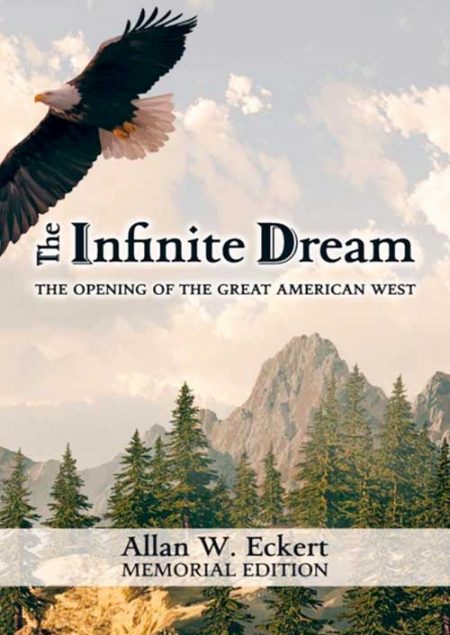Description
Winning of the West: Book 3
Gold Fever focuses upon the early phase of the Gold Rush era, beginning in early 1848 and concluding in September, 1849. Allan Eckert, a widely admired historian, relates in compelling detail the intriguing chain of developments in this great national obsession, including the following profoundly influential ones:
- Gold’s initial discovery: James Marshall, John Sutter’s assistant, found a nugget in late January, 1848 on a site 45 miles distant from Sutter’s Fort, where he was supervising the construction of a sawmill for his boss. Although Sutter apprehensively tried in vain to conceal the find, most of the region’s inhabitants greeted the rumors with disbelief. Only a few gullible men rushed to the saw-mill site.
- The early-spring local gold rush: A significant number of those few who had taken the gold rumors seriously returned home burbling with stories of successful strikes. As such lurid accounts multiplied, the male populations of area towns and the crews of ships anchored in San Francisco Bay abandoned their responsibilities to pursue golden futures.
- The entire country’s evolving response to the California gold rumors: Beginning in mid-1848 California’s U.S. Territorial Military governing officials investigated the credibility of the myriad gold-strike accounts by visiting the crowded gold-mining sites. Their inquiries confirmed the claims that many of those pursing gold were enjoying startling success. Consequently, in mid-August a courier was dispatched to Washington, D.C. bearing voluminous reports and gold samples for the Polk Administrations’s perusal. After reviewing these recently delivered documents in early December, President Polk summarized them in detail shortly thereafter during his final annual address to Congress.
Throughout the following winter months, as President Polk’s enthusiastic confirmation of California gold discoveries spread throughout the East and Midwest, tens of thousands of men who had previously ignored the distant gold hysteria now became obsessed by dreams of emigrating to the west coast and amassing great fortunes there.
- The fevered forty-niners’ travel options: Travel by sea was possible for the few who could afford it. They sailed down the length of the North and South American coasts, around Cape Horn into the Pacific Ocean, and then north to California–or they crossed the Gulf of Mexico to the Panama Isthmus, and then struggled overland to the Pacific coast before trying to catch a northbound ship. Although these seafaring expeditions involved long, tedious travel and considerable peril, overland travel across the continent was far more arduous. For the vast majority of gold-seekers, however, the latter option was the only affordable one. Eckert treats the seafarers’ plights in detail, but he devotes most of his attention to the extremely difficult, continent-crossing enterprise. Relying heavily upon excerpts taken from the copious diary entries and correspondence of Alonzo Delano, a remarkably literate emigrant, Eckert treats the reader to what is likely the most articulate, riveting account available of the exhausting, formidably perilous, ten-to-fifteen-miles-a-day slog across the vast prairies, deserts, and mountain ranges of western America.
- The forty-niners’ local impact: During the eighteen months between gold’s discovery in early 1848 and September, 1849, San Francisco’s population grew from 12,000 to 300,000 residents–95% of them men. Eckert develops the chaotic, mind-boggling growing pains of this stupendous population explosion throughout central California.
HARDBACK
By Allan Eckert







